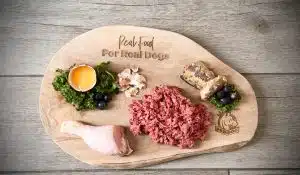The Scare Stories About Bacteria
If you’ve explored raw feeding, chances are you’ve come across the dramatic headlines. Salmonella. E. coli. Campylobacter, Listeria. All too often, these names are rolled out as scare tactics, painted as reasons to steer clear of a natural diet and leaving dog owners feeling fearful or guilty about wanting the best for their pets.
But here’s the truth: bacteria are everywhere. They live in your mouth, on your skin, on shopping trolleys, in soil, and in the puddles your dog splashes through daily. Raw feeding often gets unfairly singled out when it’s just one small part of a much bigger picture. In the wild, dogs survive by catching prey and consuming raw meat; it’s their natural diet and how they’ve thrived for thousands of years.
We’re the only species that routinely cooks its food; for wolves and wild dogs, processed diets simply don’t exist. And despite centuries of domestication, the pet dog snoozing on your sofa is still biologically the same species; their digestive system, teeth, and nutritional needs remain fundamentally unchanged from their wild ancestors.
In this article, Alison Frost, Lead Canine Nutritionist at ProDog, tackles the common myths around bacteria and raw feeding and explores the science, veterinary insights, and real experiences of dog owners, with expert contributions from Dr Nick Thompson, Holistic Vet.








0 comments